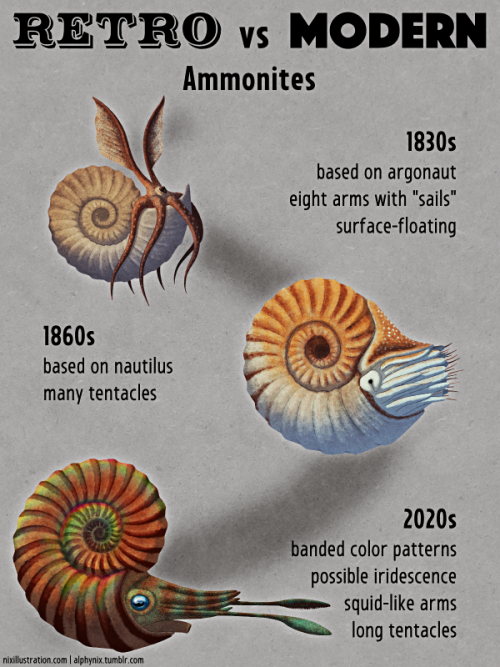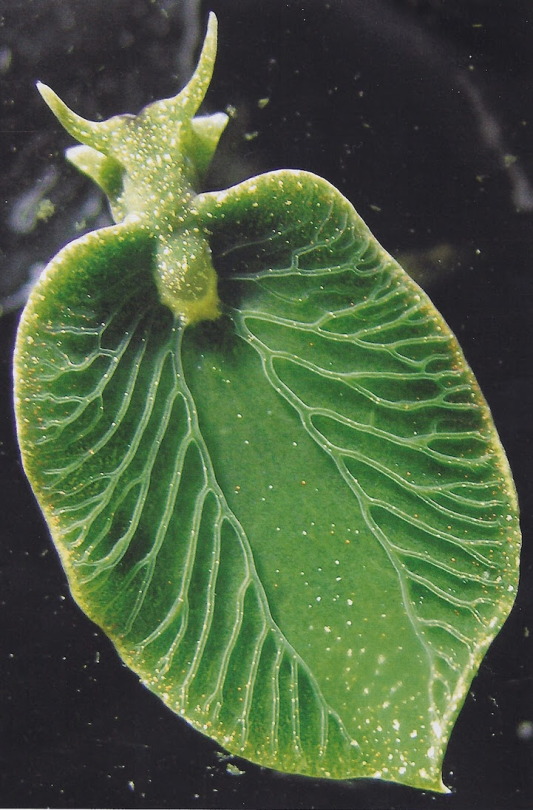Day Two Of Drawing Dumb Little Sharks Until I Learn How To Draw Sharks: The Thresher Shark! I Spent More

Day two of drawing dumb little sharks until I learn how to draw sharks: The thresher shark! I spent more time on this one and I hope it shows! Also if you know how to draw sharks id love feedback! This lil guy uses his tail as a sort of whip in order to bonk their prey. A thresher sharks tail can be up to 3 meters (around 9 feet) long on the common thresher sharks (the biggest ones)! Also did you know that they're also referred to as the fox shark? I think thats pretty neat :)
More Posts from Startdoost and Others

Retro vs Modern #17: Ammonites
Ammonites (or ammonoids) are highly distinctive and instantly recognizable fossils that have been found all around the world for thousands of years, and have been associated with a wide range of folkloric and mythologic interpretations – including snakestones, buffalo stones, shaligrams, and the horns of Ammon, with the latter eventually inspiring the scientific name for this group of ancient molluscs.
(Unlike the other entries in this series the reconstructions shown here are somewhat generalized ammonites. They’re not intended to depict a specific species, but the shell shape is mostly based on Asteroceras obtusum.)
1830s
It was only in the 1700s that ammonites began to be recognized as the remains of cephalopod shells, but the lack of soft part impressions made the rest of their anatomy a mystery. The very first known life reconstruction was part of the Duria Antiquior scene painted in 1830, but to modern eyes it probably isn’t immediately obvious as even being an ammonite, depicted as a strange little boat-like thing to the right of the battling ichthyosaur and plesiosaur.
The argonaut octopus, or “paper nautilus”, was considered to be the closest living model for ammonites at the time due to superficial similarities in its “shell” shape, but these modern animals were also rather poorly understood. They were commonly inaccurately illustrated as floating around on the ocean surface using the expanded surfaces on two of their tentacles as “sails” – and so ammonites were initially reconstructed in the same way.
1860s
While increasing scientific knowledge of the chambered nautilus led to it being proposed as a better model for ammonites in the mid-1830s, the argonaut-style depictions continued for several decades.
Interestingly the earliest known non-argonaut reconstruction of an ammonite, in the first edition of La Terre Avant Le Déluge in 1863, actually showed a very squid-like animal inside an ammonite shell, with eight arms and two longer tentacles. But this was quickly “corrected” in later editions to a much more nautilus-like version with numerous cirri-like tentacles and a large hood.
The nautilus model for ammonites eventually became the standard by the end of the 19th century, although they continued to be reconstructed as surface-floaters. Bottom-dwelling ammonite interpretations were also popular for a while in the early 20th century, being shown as creeping animals with nautilus-like anatomy and numerous octopus-like tentacles, before open water active swimmers eventually became the standard representation.
2020s
During the 20th century opinions on the closest living relatives of ammonites began to shift away from nautiluses and towards the coleoids (squid, cuttlefish, and octopuses). The consensus by the 1990s was that both ammonites and coleoids had a common ancestry within the bactridids, and ammonites were considered to have likely had ten arms (at least ancestrally) and were probably much more squid-like after all.
Little was still actually known about these cephalopods’ soft parts, but some internal anatomy had at least been figured out by the early 21st century. Enigmatic fossils known as aptychi had been found preserved in position within ammonite shell cavities, and were initially thought to be an operculum closing off the shell against predators – but are currently considered to instead be part of the jaw apparatus along with a radula.
Tentative ink sac traces were also found in some specimens (although these are now disputed), and what were thought to be poorly-preserved digestive organs, but the actual external life appearance of ammonites was still basically unknown. By the mid-2010s the best guess reconstructions were based on muscle attachment sites that suggested the presence of a large squid-like siphon.
Possible evidence of banded color patterns were also sometimes found preserved on shells, while others showed iridescent patterns that might have been visible on the surface in life.
In the late 2010s the continued scarcity of ammonite soft tissue was potentially explained as being the same reason true squid fossils are so incredibly rare – their biochemistry may have simply been incompatible with the vast majority of preservation conditions.
But then something amazing happened.
In early 2021 a “naked” ammonite missing its shell was described, preserving most of the body in exceptional detail – although frustratingly the arms were missing, giving no clarification to their possible number or arrangement. But then just a few months later another study focusing on mysterious hook-like structures in some ammonite fossils concluded that they came from the clubbed tips of a pair of long squid-like tentacles – the first direct evidence of any ammonite appendages!
A third soft-tissue study at the end of the year added in some further confirmation that ammonites were much more coleoid-like than nautilus-like, with more evidence of a squid-style siphon, along with evidece of powerful muscles that retracted the ammonite’s body deep inside its shell cavity for protection.
Since ammonites existed for over 340 million years in a wide range of habitats and ecological roles, and came in a massive variety of shapes and sizes, it’s extremely likely that their soft anatomy was just as diverse as their shells – so there’s no single “one reconstruction fits all” for their life appearances. Still, at least we now have something less speculative to work with for restorations, even if it’s a bit generalized and composite, and now that we’re finally starting to find that elusive soft tissue there’s the potential for us to discover so much more about these iconic fossil animals.
———
Nix Illustration | Tumblr | Twitter | Patreon









Elysia chlorotica, also called the “Eastern Emerald Elysia” is a bright green sacoglossa found along the Atlantic coast of North America that's earned the title of “solar-powered sea slug” for its ability to produce its own energy with sunlight and the chloroplasts that it sucks off of algae.
This unusual process, which is similar to photosynthesis, is known as kleptoplasty. Except for a select number of creatures like the adorable “leaf sheep” Costasiella kuroshimae nudibranch, very few non-plant organisms are capable of the phenomenon.

i love these wacky guys

🐙 Daily Cephalopod Fact: 🐙
Flamboyant Cuttlefish: Cuttlefish have a specialized, hollow feature called a cuttlebone that helps the animal maintain buoyancy by adjusting the levels of gas and liquid in its chambers.1 Because the flamboyant cuttlefish’s cuttlebone is relatively small, this species can only float and swim for short amounts of time. Instead of swimming, flamboyant cuttlefish “walk” along the ocean floor using their arms. They also have a highly developed sensory system that helps them respond and adjust to their surroundings.



A distinctive plant that steals nutrients from underground fungi has been discovered as a new species by botanists from the Forest Research Institute Malaysia (FRIM) in collaboration with local naturalists and stakeholders. The research is published in the journal PhytoKeys. Discovered in the tropical rainforests of Peninsular Malaysia, Thismia malayana belongs to a group of plants known as mycoheterotrophs. Unlike most plants, mycoheterotrophs do not perform photosynthesis. Instead, they act as a parasite, stealing carbon resources from the fungi on their roots. This adaptation takes advantage of the mycorrhizal symbiosis, which is usually a mutually beneficial relationship between colonizing fungi and a plant's root system.
Continue Reading.

NEXT UP ON THE SEPTEMBER UPDATE
Glass animals!
These real animals have transluscent properties, where their skin is see through and you're able to see their skeleton and insides... of course I tried my best to cutify them for you all!
This is a series of charms that utilises the transparency of the acrylic to make these creatures pop out, and with the addition of double sided epoxy it gives the effect of holding a real animal (pretty weird to experience!)
With 8 designs I'm sure there's some which catch your eye 👀
just found out that giant squid meat is chock fucking full of ammonium ions to increase buoyancy so they would taste fucking disgusting if you tried to make calamari out of them. i mean i wasn't planning on it but a girl can dream right? nobody talk to me

its pride month pillowspace. you know what that means.
huh? what? do you want me to post like, gay sea slugs? what?



-
 thecatchat reblogged this · 3 weeks ago
thecatchat reblogged this · 3 weeks ago -
 unidentified-cadaver liked this · 4 weeks ago
unidentified-cadaver liked this · 4 weeks ago -
 owlsinfall reblogged this · 1 month ago
owlsinfall reblogged this · 1 month ago -
 owlsinfall liked this · 1 month ago
owlsinfall liked this · 1 month ago -
 theaprentice reblogged this · 1 month ago
theaprentice reblogged this · 1 month ago -
 theaprentice liked this · 1 month ago
theaprentice liked this · 1 month ago -
 noxhiemiscaliginisque reblogged this · 1 month ago
noxhiemiscaliginisque reblogged this · 1 month ago -
 juniper-555 liked this · 1 month ago
juniper-555 liked this · 1 month ago -
 jellyfishsnacks2 liked this · 1 month ago
jellyfishsnacks2 liked this · 1 month ago -
 sophiedeadsunflower liked this · 1 month ago
sophiedeadsunflower liked this · 1 month ago -
 the-quasar-hero liked this · 1 month ago
the-quasar-hero liked this · 1 month ago -
 fan-jules reblogged this · 1 month ago
fan-jules reblogged this · 1 month ago -
 cheetahpaw-reg liked this · 1 month ago
cheetahpaw-reg liked this · 1 month ago -
 gmlove101 liked this · 1 month ago
gmlove101 liked this · 1 month ago -
 bunnyb34r reblogged this · 1 month ago
bunnyb34r reblogged this · 1 month ago -
 bunnyb34r liked this · 1 month ago
bunnyb34r liked this · 1 month ago -
 s1lv3rkn1ght6 reblogged this · 1 month ago
s1lv3rkn1ght6 reblogged this · 1 month ago -
 s1lv3rkn1ght6 liked this · 1 month ago
s1lv3rkn1ght6 liked this · 1 month ago -
 i-know-how-my-story-ends liked this · 1 month ago
i-know-how-my-story-ends liked this · 1 month ago -
 stingrayina reblogged this · 1 month ago
stingrayina reblogged this · 1 month ago -
 stingrayina liked this · 1 month ago
stingrayina liked this · 1 month ago -
 nori357 liked this · 1 month ago
nori357 liked this · 1 month ago -
 azaleatheanteater liked this · 1 month ago
azaleatheanteater liked this · 1 month ago -
 azaleatheanteater reblogged this · 1 month ago
azaleatheanteater reblogged this · 1 month ago -
 manganese-heptoxide reblogged this · 1 month ago
manganese-heptoxide reblogged this · 1 month ago -
 manganese-heptoxide liked this · 1 month ago
manganese-heptoxide liked this · 1 month ago -
 sharkbait-33 liked this · 1 month ago
sharkbait-33 liked this · 1 month ago -
 nightowl343 liked this · 1 month ago
nightowl343 liked this · 1 month ago -
 joker-junior reblogged this · 1 month ago
joker-junior reblogged this · 1 month ago -
 wholesome-sharks reblogged this · 1 month ago
wholesome-sharks reblogged this · 1 month ago -
 flying-wolf-32 liked this · 1 month ago
flying-wolf-32 liked this · 1 month ago -
 lady-of-lilacs reblogged this · 1 month ago
lady-of-lilacs reblogged this · 1 month ago -
 lady-of-lilacs liked this · 1 month ago
lady-of-lilacs liked this · 1 month ago -
 thetruelesbianwhisperer liked this · 1 month ago
thetruelesbianwhisperer liked this · 1 month ago -
 willowshine61 liked this · 1 month ago
willowshine61 liked this · 1 month ago -
 illunaris reblogged this · 1 month ago
illunaris reblogged this · 1 month ago -
 eclipsing-winter reblogged this · 1 month ago
eclipsing-winter reblogged this · 1 month ago -
 eclipsing-winter liked this · 1 month ago
eclipsing-winter liked this · 1 month ago -
 thirddagger liked this · 1 month ago
thirddagger liked this · 1 month ago -
 sumrallmind reblogged this · 1 month ago
sumrallmind reblogged this · 1 month ago -
 cindersongblog liked this · 1 month ago
cindersongblog liked this · 1 month ago -
 just-here-for-shark-stuff reblogged this · 1 month ago
just-here-for-shark-stuff reblogged this · 1 month ago -
 heyimreese reblogged this · 1 month ago
heyimreese reblogged this · 1 month ago -
 inkieblu liked this · 1 month ago
inkieblu liked this · 1 month ago -
 flamefirenut liked this · 1 month ago
flamefirenut liked this · 1 month ago -
 binders-and-beanies reblogged this · 1 month ago
binders-and-beanies reblogged this · 1 month ago -
 originaljediinjeans liked this · 1 month ago
originaljediinjeans liked this · 1 month ago -
 hauntedellie reblogged this · 1 month ago
hauntedellie reblogged this · 1 month ago -
 hauntedellie liked this · 1 month ago
hauntedellie liked this · 1 month ago

